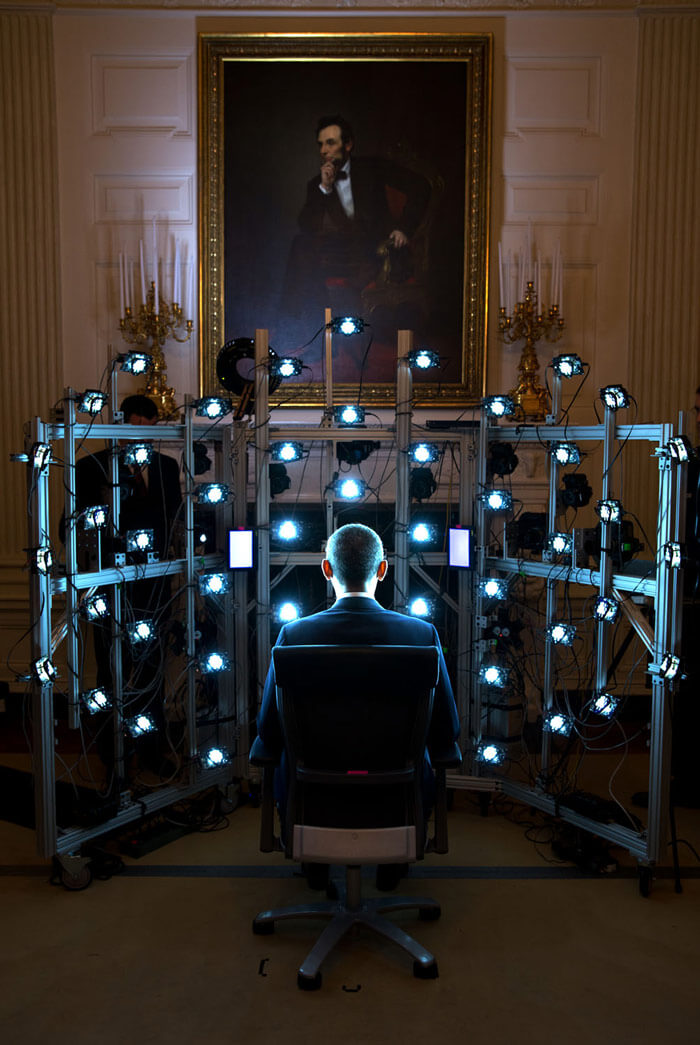Pixels, Not Paint: Engineers Create the Most Realistic Presidential Portrait Ever



Last June, USC Institute for Creative Technologies (ICT) Chief Visual Officer Paul Debevec traveled to the White House to join a Smithsonian Institution-led team in creating the first-ever 3-D portrait and 3-D-printed bust of a U.S. president.
For their portrait session with Obama, Debevec’s team brought a modified version of their Playa Vista-based Light Stage X to Washington, D.C. The high-speed system used eight cameras and custom-built 50 LED lights to create a realistic computer model of Obama in just over a second by flashing 10 polarized lighting conditions over the president’s face to record the effects of light striking his face from different angles. Back at the Smithsonian’s offices, the team processed the data from the Light Stage as well as scans collected by the Smithsonian with handheld 3-D scanners, in order to create a digital portrait for a life-sized 3-D–print bust of the president.
“The Smithsonian’s 3-D presidential portrait project represents the first deployment of a Light Stage system designed for mobile use, and the fastest scanning session ever conducted by ICT’s Graphics Laboratory,” said Debevec, a USC Viterbi professor of computer science. “The Smithsonian Institution had an ambitious vision to create the first-ever 3-D-printed model of a president, and it was an honor to contribute our technology to the process.”
The completed portrait and bust were displayed at the White House Maker Faire on June 18. In December, they were put on view in the Commons gallery of the Smithsonian Institution Building, known as the Castle, in Washington.
The Light Stage system has been used extensively in Hollywood to scan actors for their virtual roles in blockbusters including “Avatar,” “The Curious Case of Benjamin Button” and “Maleficent.” In 2010, Debevec and his collaborators received a Scientific and Engineering Academy Award in recognition of their contribution to visual effects via the development of the Light Stage.
Debevec and ICT have also used the Light Stage in collaboration with the U.S. Army Research Lab to create realistic virtual characters for immersive military training environments. The Army has funded much of the research underlying the development of the Light Stage systems. In addition, the USC Shoah Foundation has used the technology to scan Holocaust survivor Pinchas Gutter for a test project to preserve the ability for future generations to ask him questions.
Fun Fact
Three USC Viterbi Computer Science professors are each credited in Peter Jackson’s epic film series, The Hobbit, for their work as visiting scientists at Weta Digital in New Zealand during the productions: Paul Debevec for An Unexpected Journey, Jernej Barbič for The Desolation of Smaug and Hao Li for The Battle of the Five Armies.




